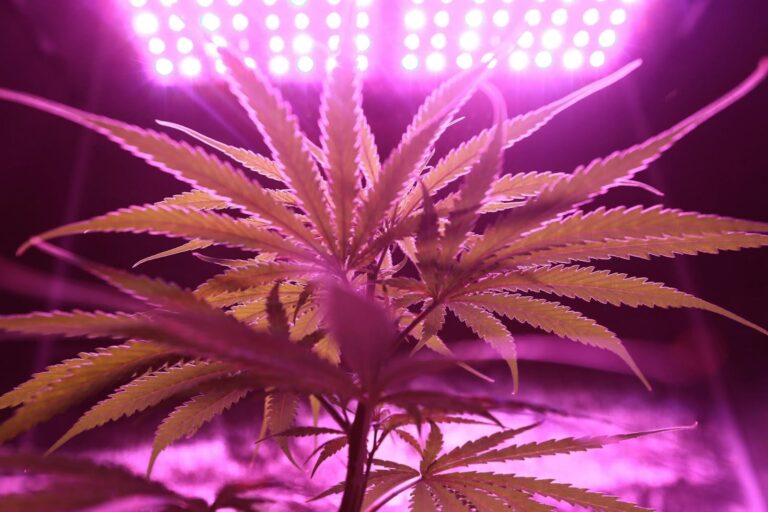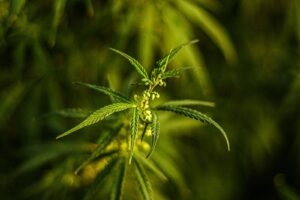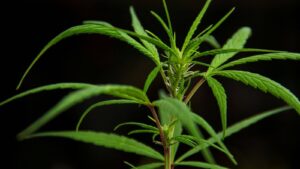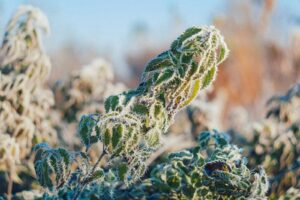Do you ever feel like the quality of cannabis from one batch can be drastically different from another? It usually boils down to the drying process. A poorly managed drying setup can ruin your hard work, leading to issues like mold growth and the loss of its natural aromas and flavors. This can reduce potency and compromise the entire experience for the end consumer.
Two key environmental factors that significantly influence the drying process are humidity and temperature. Understanding and controlling these factors can prevent issues such as mold growth, harsh smoke, and loss of cannabinoids and terpenes.
This article will help you to balance temperatures, humidity, and other environments to preserve a plant’s delicate flavors, vibrant aromas, and active compounds.
This ensures that your cannabis stands out in both quality and potency. Let’s explore the key elements of drying cannabis and uncover how to master this vital stage of cultivation.
Why Proper Drying is Essential For Cannabis
Drying cannabis is more than just removing moisture; it’s about preserving the plant’s essence and ensuring its active compounds’ integrity. The process is pivotal in determining the final product’s aroma, flavor, and overall potency. Let’s dive deeper into why this step is so critical:
- Prevent Mold and Mildew: Improper drying provides an ideal breeding ground for mold and mildew. These can destroy your batch.
Mold destroys the product and seriously endangers consumers’ health through respiratory problems or allergic reactions. The environment must be carefully controlled to prevent mold from growing, and the drying process must be constantly monitored.
- Preservation of Potency: Cannabinoids, such as THC and CBD, and terpenes are the chemicals responsible for the psychoactive effects of cannabis and its characteristic flavors. These compounds are extremely sensitive to environmental factors such as temperature, humidity, and light.
- Smoothness: Proper drying breaks down the chlorophyll and other leftover plant compounds. Excess chlorophyll is one of the reasons why cannabis comes out harsh and bitter-tasting and might irritate your throat when smoking.
- Good quality: Well-dried buds retain most of their colours, plant structure, and trichomes, making them appealing to the human eye. Poorly dried buds might appear dull, brittle, or overdried.
- Extended Shelf Life: Correctly dried cannabis deteriorates at a lower rate than poorly dried samples because its potency, flavor, and aroma are retained longer. This means the product remains market-ready for months without losing quality.
- Consistency in Quality: Proper drying ensures that every bud in the batch is uniform in texture and moisture content, offering the same experience to all users. This consistency is important, especially for commercial growers who always want to deliver a premium product.
So, what should be the optimal temperature and humidity levels for drying cannabis? Let us understand.
Optimal Temperature and Humidity Levels For Drying Cannabis
Getting the temperature and humidity right is a major determinant for good drying. Terpenes and cannabinoids-the chemical compounds responsible for the aroma and potency of buds-are protected by both these factors.
- Ideal temperature range: The drying space should be maintained at 60-70°F (15-21°C). By avoiding overheating, you can prevent the degradation of terpenes and cannabinoids while allowing moisture to evaporate slowly.
Low temperatures retain the flavor compounds that are easily broken down, whereas high temperatures can dry the outer layers too quickly, resulting in uneven moisture levels.
- Relative humidity: 45-55%. This allows your buds to dry uniformly without becoming brittle or soggy. Anything outside this range can lead to mold if it is too high or over-drying if it is too low, which may compromise the quality of your harvest.
- Ventilation and airflow: Proper airflow helps maintain the right humidity in the drying area. Use fans to circulate air gently without blowing directly on the buds, as this might dry them unevenly.
Do you struggle to meet your cannabis growth requirements? Fluctuating conditions lead to uneven drying, degrade terpenes, and increase the risk of mold. Stable temperature and humidity are critical for producing flavorful, potent buds.
PlanaCan lets you schedule your yield months while working out your daily schedules. It adjusts easily and organizes all your cultivation information, keeping no task on the list untouched. Maximize your cultivation processes for maximum results!
Now, let us understand how to set up the perfect environment to dry your cannabis.
Setting Up the Perfect Cannabis Drying Environment
Creating the ideal drying environment does not call for expensive equipment but only careful attention to preclude common mistakes:
- Select an Appropriate Environment: Choose an environment with complete control over the variables such as light, temperature, and humidity.
The best drying space is dark and enclosed since exposure to light degrades cannabinoids over time, lowering the product’s potency.
You should also consider insulated walls and a sealed environment to minimize external influences on the drying conditions.
- Essential Equipment: Your drying room should have an air conditioner, humidifiers, dehumidifiers, fans, and a hygrometer to monitor conditions. This combination ensures the environment remains stable, and adjustments can be made when needed.
For advanced setups, consider using smart sensors and controllers to automate the maintenance of optimal conditions.
- Ensure Air Circulation: Proper airflow is essential for preventing stagnant air, which can promote mold growth. Use oscillating fans to circulate air evenly throughout the room.
To further enhance air distribution, consider positioning fans at varying heights and using intake and exhaust systems for better ventilation. However, do not aim fans directly at the buds, as this can cause uneven drying or damage to trichomes.
- Light Control: Make the drying area as dark as possible. UV light degrades both cannabinoids and terpenes, reducing the potency and flavor of your cannabis.
Use blackout curtains or other coverings to minimize light exposure. Use materials that block infrared light to maintain a stable temperature and prevent heat buildup for extra protection.
Next up, let us discuss some techniques used in drying cannabis. Here are the details.
Cannabis Drying Techniques to Consider
Cannabis drying is both an art and a science. Attention to detail and proper techniques are essential for maintaining quality and potency. Different methods exist, each with unique advantages and disadvantages.
Method | Description | Pros | Cons |
Traditional Methods | Hanging buds upside down or using drying racks to allow natural airflow | Simple, cost-effective, maintains structural integrity | Requires more space, may take longer if airflow isn’t optimal |
Alternative Methods | Using freeze-drying machines or drying cabinets for controlled conditions | Preserves terpenes and cannabinoids well; highly precise | Expensive, requires specialized equipment |
Monitoring Tools | Using hygrometers and thermometers to monitor and adjust conditions in real-time | Ensures consistent results, simplifies the drying process | Requires investment and regular calibration |
Hybrid Techniques | Combining traditional drying with controlled methods like cabinets | Balances efficiency with quality control | Requires additional equipment and planning |
Microwave and Oven Drying | Using heat-based appliances to speed up drying in emergencies | Quick and accessible for emergencies | Significant terpene and potency loss; unsuitable for premium cannabis |
Solar Drying | Leveraging natural sunlight to dry cannabis | Energy-efficient, environmentally friendly | Degrades THC with light exposure; inconsistent drying conditions |
Controlled Freeze-Drying | Rapidly freezing buds and vacuuming out moisture for premium results | Exceptional preservation of terpenes and cannabinoids; faster drying | High cost of equipment |
With PlanaCan, track your cannabis yield in real-time while using hygrometers and thermometers to monitor and adjust conditions. Document each step, refine processes, and boost yields for greater profits!
So, how do you ensure consistency throughout the drying process? Let us discuss.
Ensuring Consistency Throughout the Cannabis Drying Process
Inconsistent drying can ruin the quality of your cannabis. Maintaining uniformity requires a combination of discipline, technology, and regular monitoring. Here’s how to ensure every batch is dried evenly and optimally:
- Set Internal Guidelines: Establish and document temperature (60-70°F / 15-21°C) and humidity (45-55% RH) parameters in PlanCan, ensuring your team is trained to follow these guidelines strictly.
- Monitor Progress Frequently: Use hygrometers and thermometers to continuously track environmental conditions, utilizing systems that provide real-time alerts for any deviations.
- Perform the Stem-snapping Test: Check if shorter stems snap cleanly without bending to determine if the buds are adequately dry and ready for curing.
- Tip for Uniform Drying: Regularly roll or inspect your buds to ensure even drying and identify any hidden moisture pockets.
- Utilize Technology: For large-scale operations, employ automated environmental controls to maintain stable conditions and generate data logs for review.
- Regular Equipment Calibration: Ensure all measuring devices, including hygrometers and thermometers, are calibrated regularly for accurate readings.
- Data Analysis: Keep records of each batch’s drying conditions to identify patterns, address inconsistencies, and improve future drying processes.
- Staff Training: Educate staff to recognize early signs of issues like uneven drying or mold, enabling prompt action to minimize losses.
- Environmental Redundancy: Maintain backup systems, such as humidifiers or alternate power sources, to prevent interruptions in the drying process.
- Prevent Contamination: Ensure cleanliness in the drying area by sanitizing equipment and surfaces between batches, and require staff to wear gloves to reduce contamination risks.
Now, let us discuss how we can overcome the challenges that occur while drying cannabis.
Overcoming Common Cannabis Drying Challenges
Drying cannabis can be challenging, but it is manageable with the right approach. The right approach ensures that the quality, potency, and aroma are preserved. Let’s dive deeper into these challenges, understand their impact, and offer practical solutions:
1. Mold Risks:
Mold thrives best in high-humidity environments, especially when relative humidity exceeds 55%. Once mold forms, it can rapidly spread and spoil an entire batch.
Solution: Proper ventilation by fans and air circulation systems prevent stagnant air. Monitor humidity levels with hygrometers and use dehumidifiers to maintain optimal conditions.
Pro Tip: Check the buds daily during the drying process for signs of mold or mildew, such as white or gray spots, and remove the affected areas immediately.
2. Adjusting for Different Climates:
High moisture levels in humid climates make low humidity difficult to maintain. Conversely, dry climates can overdry the buds and remove the most important oils and terpenes.
Solution for Humid Climates: Invest in industrial-grade dehumidifiers and seal the drying room to prevent moisture from entering. For extra moisture control, add silica gel packs or desiccants.
Solution for Dry Climates: Use humidifiers to add moisture to the air and ensure an even drying process. Consider installing a humidistat to automate humidity adjustments.
3. Avoid Overdrying:
Drafty rooms or poor airflow regulation can cause dry overs and too-dry patches while areas remain moist.
Solution: To keep the environment stable, use door seals, draft blockers, and insulation. Place oscillating fans around to create air circulation without blasting them directly on the buds.
Pro Tip: Keep the humidity levels constant at 45-55% so buds do not become brittle or lose their terpene profile.
4. Inconsistent Equipment Performance:
Malfunctioning dehumidifiers or fans can cause uneven drying and create microclimates within the drying area.
Solution: Service and calibrate all equipment regularly to ensure they perform at peak performance. Have backup units available to avoid disruptions.
5. Time Management:
Rushing the drying process to ensure tight schedules means compromising quality.
Solution: Ensure proper planning and scheduling of your drying timeline. Depending on the size and density of the buds, it requires a minimum of 7 to 14 days. Be patient for premium output.
So, what do you do after you’ve successfully dried your cannabis? Here’s what you should do.
Post-Drying: The Transition to Curing
Curing is essential for enhancing the taste, smell, and potency of cannabis after drying. Here’s how to transition into curing:
- Pack into Airtight Containers: Use glass mason jars or specialized curing containers to prevent humidity fluctuations and contamination.
- Optimal Humidity Levels: Maintain relative humidity inside containers between 58-62% to protect terpenes and cannabinoids while preventing mold growth.
- Burp the Containers Regularly: Open containers once or twice daily for 5-10 minutes during the first 1-2 weeks to release excess moisture and replenish oxygen. Afterward, burping can be done every few days.
- Monitor Conditions: Place small hygrometers inside containers to track humidity. If levels exceed 62%, use desiccant packs or leave lids off longer to reduce moisture.
- Patience is Key: Allow 2-4 weeks for curing, extending to 6-8 weeks for optimal flavor and potency as chemical changes enhance quality.
- Avoid Light and Heat Exposure: Store containers in a cool, dark place to protect cannabinoids and terpenes from degradation.
Conclusion
Drying cannabis involves reducing its moisture content, protecting its most desirable qualities, and bringing out all its potential. Proper temperature, humidity, and environmental control regulation will ensure the cannabis retains as much of its aroma, taste, and effect as possible. By avoiding mold formation and overdrying, you get a superlative final product superior to others in quality and potency.
PlanaCan is a game-changer for growers who aim to maximize yield through optimized processes. With customizable templates tailored to specific strains and harvest cycles, you can easily automate every stage, from planting to harvesting, with just a few clicks. The clear visual timeline helps manage tasks efficiently, allowing for long-term planning while adapting to daily changes. By centralizing information, PlanaCan ensures team alignment and task completion, making cultivation management more effective.
With the help of PlanaCan, growers can manage their crops effectively, avoid costly mistakes, and deliver the highest-quality product. Schedule a free call today to see how PlanaCan can transform your cultivation process.




